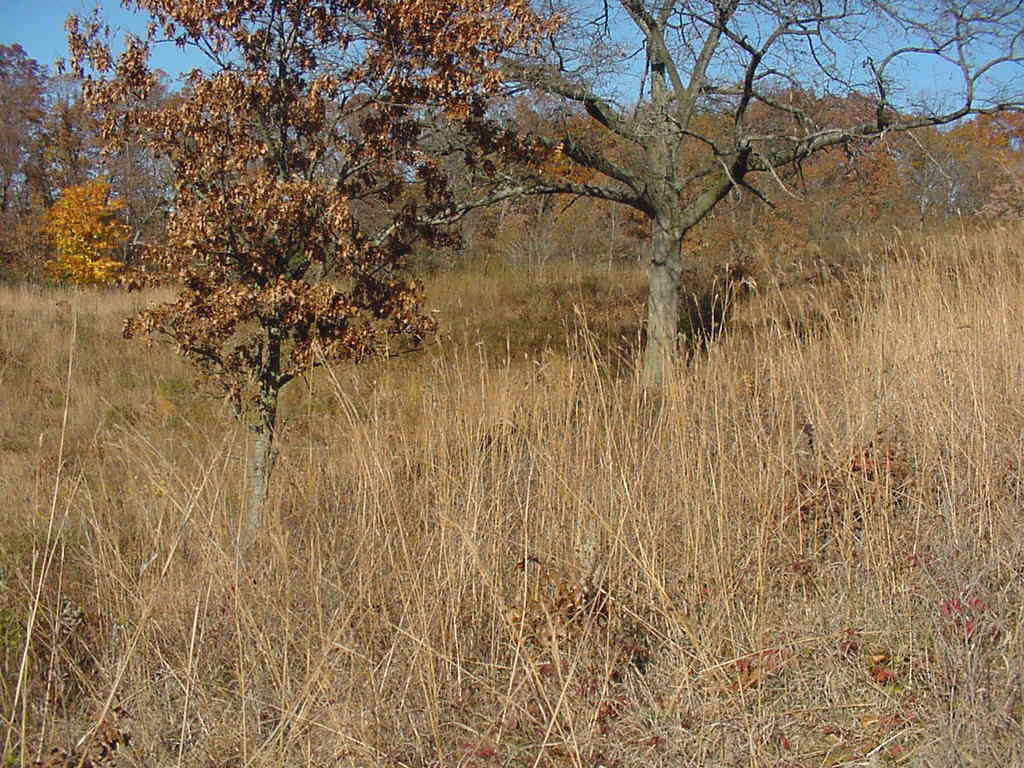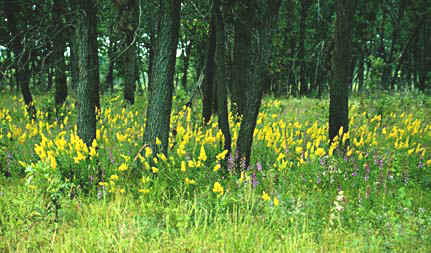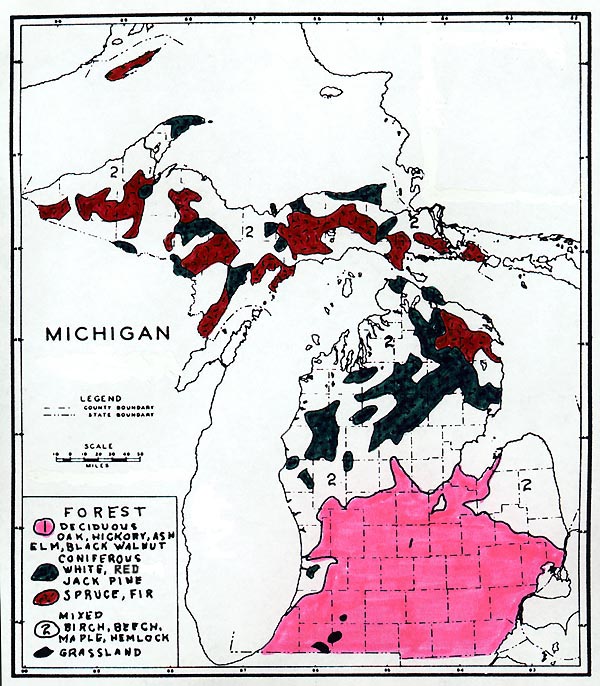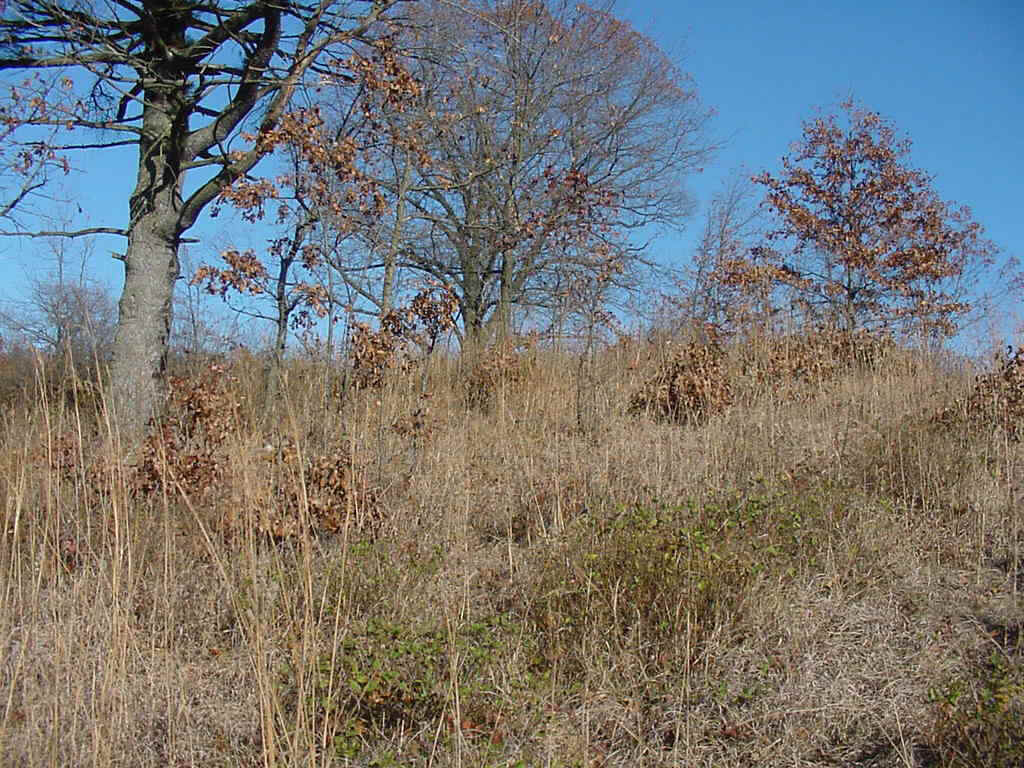On the dry, flat-to-rolling landscapes of SW lower Michigan, savanna-like communities thrived. Oak Openings are savannas which have Black and White Oak trees that live side by side with a mixture of grasses, sedges, wildflowers and shrubs.

Source: Photograph courtesy of Randy Schaetzl, Professor of Geography -
Michigan State University
Some very specialized animals are also part of the area, including the rare Lark Sparrow
and several species of butterflies such as the Frosted Elfin, Persius Dusky Wing and the
federally endangered Karner Blue butterfly.

Source: Photograph courtesy of Randy Schaetzl, Professor of Geography -
Michigan State University
These were called "oak openings" by the early settlers, since they consisted of
tallgrass prairie with scattered trees, usually oaks or hickories. When grown out in
"the open", the trees would take on an open branching pattern, as the ones below
show.
Source: Photograph courtesy of Randy Schaetzl, Professor of Geography -
Michigan State University
Today, many of these landscapes are in irrigated corn. A few oaks remain as a
testament to the presettlement vegetation.
Source: Photograph courtesy of Randy Schaetzl, Professor of Geography -
Michigan State University

Source: Unknown
Source: Photograph courtesy of Randy Schaetzl, Professor of Geography -
Michigan State University
Source: Photograph courtesy of Randy Schaetzl, Professor of Geography - Michigan State University
The distinctive leaves of oak trees make recognizing them very easy. Oaks, like the pin
oak shown here, are highly competitive on sandy, dry soils. Many oaks also have the
ability to resprout after fire, quickly re-establishing their dominance on sandy,
fire-susceptible landscapes.

Source: Photograph courtesy of Randy Schaetzl, Professor of Geography - Michigan State University
This material has been compiled for educational use only, and may not be reproduced without permission. One copy may be printed for personal use. Please contact Randall Schaetzl (soils@msu.edu) for more information or permissions.